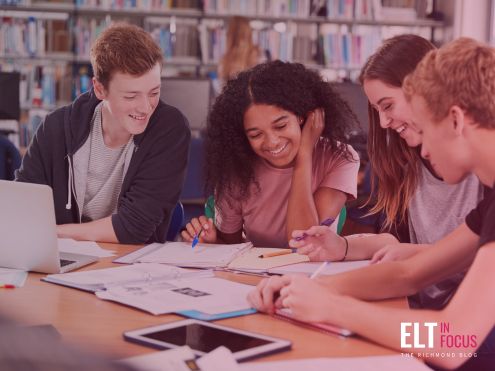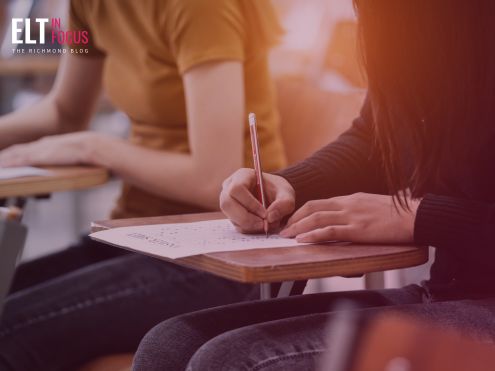There are three transitional approaches to extensive reading while students acquire sufficient vocabulary. The traditional one is graded readers. However, evidence from the beginning of the 21st century began to contradict the common view that text length, genre, and structural complexity should closely match students’ proficiency level.1 In fact, teachers should not restrict themselves to assigning short texts dealing with concrete information to novice L2 readers, nor should they be forced to select ‘simplified’ texts for novice and intermediate readers.2
A second approach is to encourage such readers to read graphic novels. The advantages are obvious: a graphic novel is much less daunting for learners than a conventional un-illustrated book. Moreover, the illustrations support comprehension, so learners are encouraged to make informed guesses at the meaning of new words: an essential skill.
The final approach is to present students with heavily footnoted texts so that dictionary work is unnecessary. This is what you are offered in these blog posts. All explanations in the footnotes are in easier English while the texts themselves are un-simplified. The intentional repetition of footnotes across multiple texts empowers students and fosters learning while exposing them to two crucial lexical features of English: synonymy and polysemy. This process gives extensive exposure to the 1,500 to 2,000 high-frequency words that represent a significant vocabulary-learning objective.
Vocabulary Revisited
In one sense, the objective of reading comprehension work is clear: to achieve a level of automaticity and comprehension for reading to be enjoyable. Once students are reading in English for pleasure (“free voluntary reading”), the rest of the learning process is downhill all the way. “Certain aspects of language can only be acquired through extensive and authentic exposure to the L2 (i.e. through reading, listening, and interaction), and once learners arrive at a certain stage of L2 acquisition (intermediate to advanced levels), it is likely that their continued progress in that language will mostly result from such natural exposure and not classroom instruction.”3 Extensive reading can provide L2 learners with the quantity and exposure to the patterns of language that give native-speaking students such a head start.
The good news is that L2 reading just gets easier and easier. This is worth pointing out explicitly to learners. Reading in English will never be as difficult for them as it is right now as they embark on a process designed to equip them with a powerful secret weapon: the habit of reading in English.
1 Gascoigne, C. (2002). Documenting the initial second language reading experience: The readers speak. Foreign Language Annals, 35, 554–560; Maxim, H.H. (2002). A study into the feasibility and effects of reading extended authentic discourse in the beginning German language classroom. Modern Language Journal, 86, 20–35.
2 Young, D.J. (1993). Processing strategies of foreign language readers: Authentic and edited input. Foreign Language Annals, 26, 451–468; Young, D.J. (1999). Linguistic simplification of SL reading material: Effective instructional practice? Modern Language Journal, 83, 350–366.
3 Hedgcock, J.S. and Ferris, D.R. (2009). Teaching Readers of English: Students, Texts, and Contexts (p. 208). [New York, NY: Routledge]









